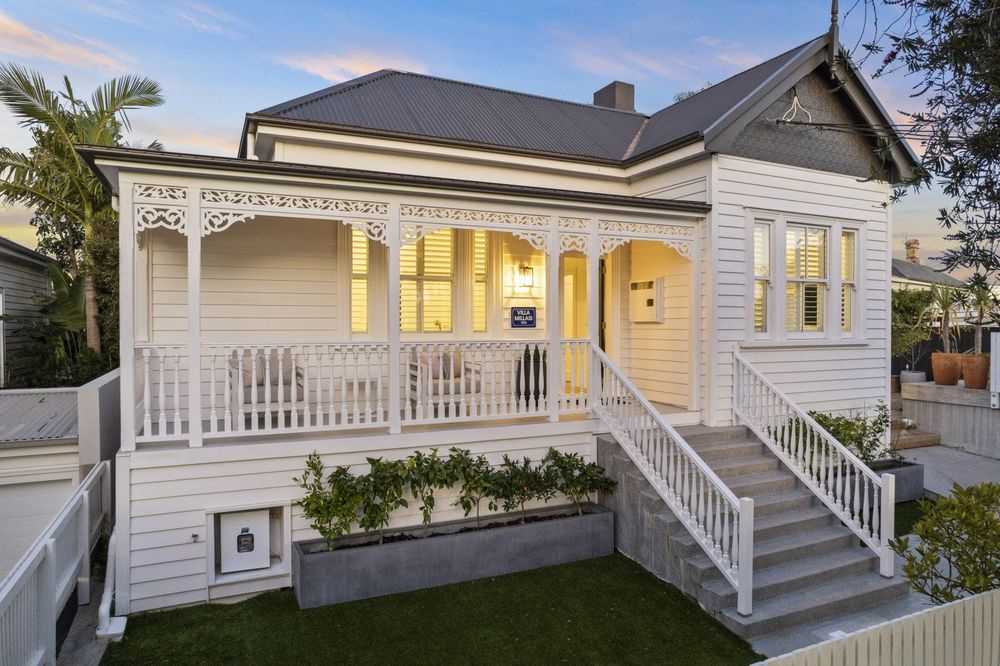Villas
History:Villas were the predominant new home design in New Zealand from the 1880s through to World War I. This design emerged as cities and towns expanded, necessitating more substantial housing than the pioneer cottages of earlier settlements. As urban populations grew rapidly in the 1880s, the villa became the favored style for new homes in the first suburbs of colonial towns. Early villas were simple, but as the construction industry evolved, villas grew in complexity and decoration, catering to the tastes of an increasingly affluent consumer base. The villa style remained dominant until the onset of World War I.

Typical Features: The most distinctive feature of villas was their construction, typically almost entirely of timber, including fixtures and fittings, with metal roofs. Some villas were built using brick masonry and featured other types of roofing such as clay tiles or slate. Prospective homeowners could choose a floor plan and accessories from a catalog and have their homes assembled from prefabricated elements by local tradesmen. While many villas were built to these standardized plans, some were architect-designed, and others built ‘on spec’ as suburbs developed, requiring minimal documentation due to their prefabricated nature.
Locations:Public transport innovations, like horse-drawn steam and electric trams, allowed cities to expand further from their centers, leading to widespread villa subdivisions, which are now considered central city areas. Predominantly single-storeyed, villas in affluent suburbs like Herne Bay in Auckland or Kelburn in Wellington, or in densely built areas like inner Wellington, were often two-storeyed. Villas were tailored to local conditions, with regional variations in design, such as expansive verandas in Auckland, cast iron fretwork in Dunedin, and narrower two-storeyed designs in Wellington. The availability of quality native timber facilitated the production of elaborate decorative elements using steam-powered woodworking machinery.
Modifications:Original villas lacked modern services like gas, electricity, and sewerage, which were added as infrastructure developed. Many villas have been modified to expand service areas, install plasterboard linings, or enclose verandas, often in ways that do not match the original character.
Current State:Since the 1980s, villas have seen a resurgence in popularity, with many undergoing extensive renovations. However, many of the country’s 85,000 villas still require significant upgrades to improve energy efficiency, sunlight access, and modern amenities, while preserving their historical character.
